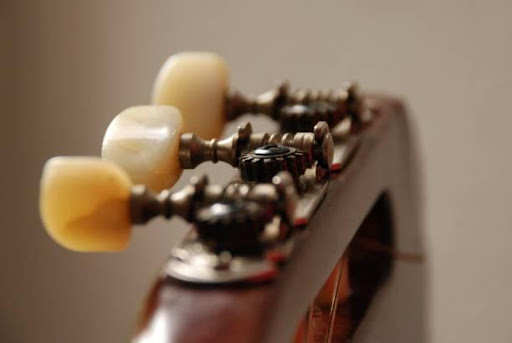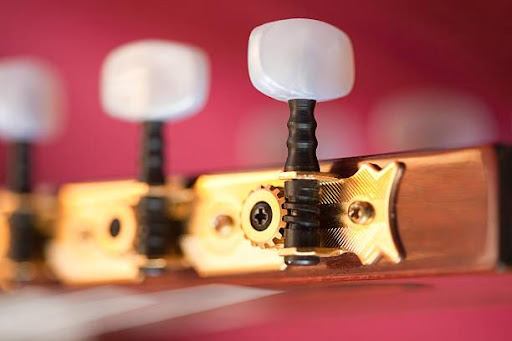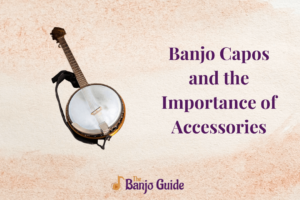For a stringed musical instrument like the banjo, tuning is really important. Tuning ensures the quality performance of the instrument. Playing untuned instruments affects the sound quality.
For tuning, there are many tuners available. Out of multiple options available in the market, the best quality tuners should be sought.
Gotoh is one of the brands that banjoists can consider. The Gotoh tuners provide optimum quality tuning to the banjo. Gotoh offers banjo tuning machines that ensure premium performance by the instrument.
Understanding Gotoh banjo tuners: What you need to know
Gotoh banjo tuners are the banjo tuning machines used and trusted by many professional banjoists. These tuners are best known for their excellent craftsmanship. They are durable and reliable.
These tuners are manufactured in Japan. Gotoh is one of the best brands for planetary tuners. For four-stringed banjos, the 4:1 variant of Gotoh tuners works the best. However, it has another variant too, the 13:1 ratio. It mainly does the job for the 5th string in the banjo and is exclusively designed for that.
Banjo tuning knob in Gotoh is specifically designed to provide smoothness while operating the tuners.
How to install and maintain Gotoh banjo tuners: Step-by-step guide
Installing the Gotoh tuners in the banjo is relatively a simple process. Here is the step-by-step guide to installing and maintaining Gotoh banjo tuners. Make sure you do not rush and follow all the steps carefully.
- Loosen the strings and take out the old tuners: To install Gotoh tuners, loosen the strings of your banjo. Then remove the old tuners using a tool like a screwdriver. From unscrewing to pulling out the tuners, everything needs to be done gently.
Banjo tuner replacement can be tricky for beginners. However, it is an easy task once you get a hold of it.
- Make the holes clean: The holes where tuners are installed, swipe off the dirt from them. You can use a dry and clean cloth or a brush to do so. Be gentle.
For cleaning instruments, a specialized spray is available in markets. It can be used.
- Insertion of new Gotoh tuners: Once the holes are clean, you can insert new tuners. Put the Gotoh tuners gently into the holes present in the headstock. Make sure the tuners are closely fitted.
- Tighten the screws: Tighten the mounting screws using the screwdriver once the tuners are fitted in. Make sure to tighten them firmly and accurately. Tuning would be disrupted if the screws are loose. Over-tightening would lead to damage in the headstock because of the pressure.
- Tune it: Once tuners are in place and tightened, tune your banjo. Tune it as per your requirements and desired pitch.
With these steps, your tuners have been installed and are right in place.
Maintenance of tuners is as important as installing them correctly. Here are 5 points to keep in mind to ensure good maintenance for your banjo tuning machines.
- Make sure the tuners are fitted firmly and are not over-tightened. Over-tightening builds up the pressure on the headstock.
- Clean the tuners regularly. Do not use water for cleaning. Keep the cleaning dry.
- Polish and lubricate the moving parts of the tuners at regular intervals. It ensures smooth functioning and the tuner lasts longer.
- Keep the screws in a regular check. Make sure they are not very loose. Loosened screws affect the tuning of the banjo. They may even fall off the banjo.
- Keep the banjo safely and carefully when it is not in use. This would prevent any potential damage to the tuners as well. Make sure the banjo is always kept in a dry place. Moisture can cause the metallic parts of the tuners to rust.
Gotoh banjo tuners vs. other brands: A comparison
Gotoh is one of the leading brands for planetary tuners. However, other brands also exist in the competition.
Gotoh tuners are the best when it comes to durability, reliability, performance, and craftsmanship. Following are the few features of a Gotoh banjo tuner that make it a great option.
- Available in two variations: SPBJ-4 with a gear ratio of 1:4 and SPBJ-5 for a 5-stringed banjo with a gear ratio of 1:13.
- Nickel plated
- Sleek design
- Easy installation
- High performance and longer life
- Reasonable prices
Following are the other brands of banjo tuners.
- Deering banjo tuners: The best feature of Deering banjo tuners is their smooth operation. They are manufactured very precisely and allow the smooth turning of the tuning keys. They help avoid sudden jerks while tuning.
Deering offers a great price range to choose from.
- Gold Tone tuners: Gold Tone tuners have been in the market for over twenty years. With smooth banjo tuning knob, they are available in three platings: chrome, nickel, and gold.
Gold tone tuners are a great option for banjos that go with guitar tuners too.
- Grover tuners: Grover is yet another brand known for the quality of its tuners. They are both affordable and precisely manufactured.
The cost and performance gap in Grover tuners makes them popular among beginner and intermediate banjoists.
Troubleshooting Gotoh banjo tuners: Common issues and fixes
While using the Gotoh banjo tuners, some issues may arise. These are common issues that one can face while tuning. They are easy to fix, and there is nothing to worry about.
- Stiffness in the tuners: You can restriction while moving the knobs of the tuner. It can happen if moving parts of the tuners are not well lubricated.
Fix this issue by lubricating your tuners well. Make sure you are focusing more on the moving parts of the tuners.
- Slipped strings: This is a common issue that banjoists face. Strings of your banjo may come down the Gotoh tuners. It could be because screws are not fitted well, or stings are crossing, etc.
To fix it, check how well the screws are tightened. Tighten them if they are loose. Make sure strings are not overlapping.
- Non-alignment: Sometimes your tuners are out of alignment and not compatible with other parts of the banjo. This can damage the accuracy and the performance of the banjo to a great extent.
Fix it by thoroughly checking all the parts of the banjo. They should all be in good condition and position. Then check the compatibility of your banjo with tuners. Make the necessary adjustments like positioning the tuners or strings.
Expert tips for optimizing your banjo’s tuning with Gotoh tuners
Given below are some expert tips to optimize your banjo’s tuning with Gotoh tuners.
- Be gentle while replacing the tuners. Do not exert needless force as it can cause damage to the headstock.
- Ensure tuners are neither too tight nor too loose. They should be tightened with accuracy.
- To get a desired pitch, tune in a precise manner. Hear carefully while you have tuned the banjo. Make necessary adjustments if needed.
- Loosen the strings and tuners when not in use. This would ensure your banjo is tuned best as per the desired pitch during playing sessions.
- Look if any of the stings are overstrained by the tuners. Check for the overlapping of the strings as well. Overlapping reduces the overall banjo compatibility with the tuners.
- Thoroughly check if every part of your banjo is in good condition or not at regular intervals.
- Go through the banjo buying guide to know what style suits you. Different factors related to banjo create a great impact on tuning and tuners being used. Thus, going through the banjo buying guide would help beginners a lot.
So far, we have developed a great understanding of Gotoh turners. From installation to the price factor, we have covered almost everything to derive a fruitful conclusion.
Gotoh banjo tuners are surely one of the best tuners available for their features. Its cost, quality, performance, accuracy, easy installation, durability, and reliability make it one of the best.
For having the best playing sessions and tuning experience, Gotoh tuners should be considered. Till then, Happy playing!





